🎼 Boléro 💃


Boléro is a one-movement orchestral piece by the French composer Maurice Ravel (1875–1937).
💃
Originally composed as a ballet commissioned by Russian actress and dancer Ida Rubinstein, the piece, which premiered in 1928, is Ravel's most famous musical composition.
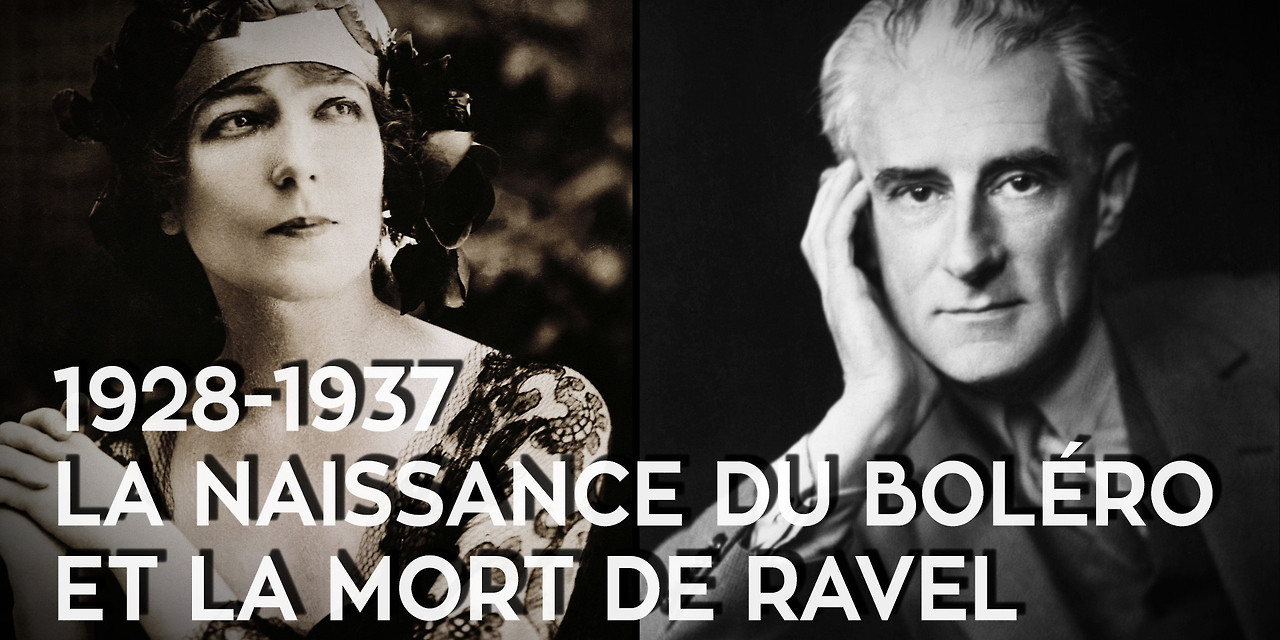 En cette année 1928, la belle et riche Ida Rubinstein commande un ballet espagnol à Maurice Ravel. Le musicien élabore rapidement sa mélodie. Dès sa première à l’opéra de Paris, c’est un succès. La fièvre gagne les Etats-Unis. Mais Ravel n’en profitera pas longtemps. Une maladie et un accident de voiture ont raison de lui. Il s’éteint le 28 décembre 1937.
En cette année 1928, la belle et riche Ida Rubinstein commande un ballet espagnol à Maurice Ravel. Le musicien élabore rapidement sa mélodie. Dès sa première à l’opéra de Paris, c’est un succès. La fièvre gagne les Etats-Unis. Mais Ravel n’en profitera pas longtemps. Une maladie et un accident de voiture ont raison de lui. Il s’éteint le 28 décembre 1937.
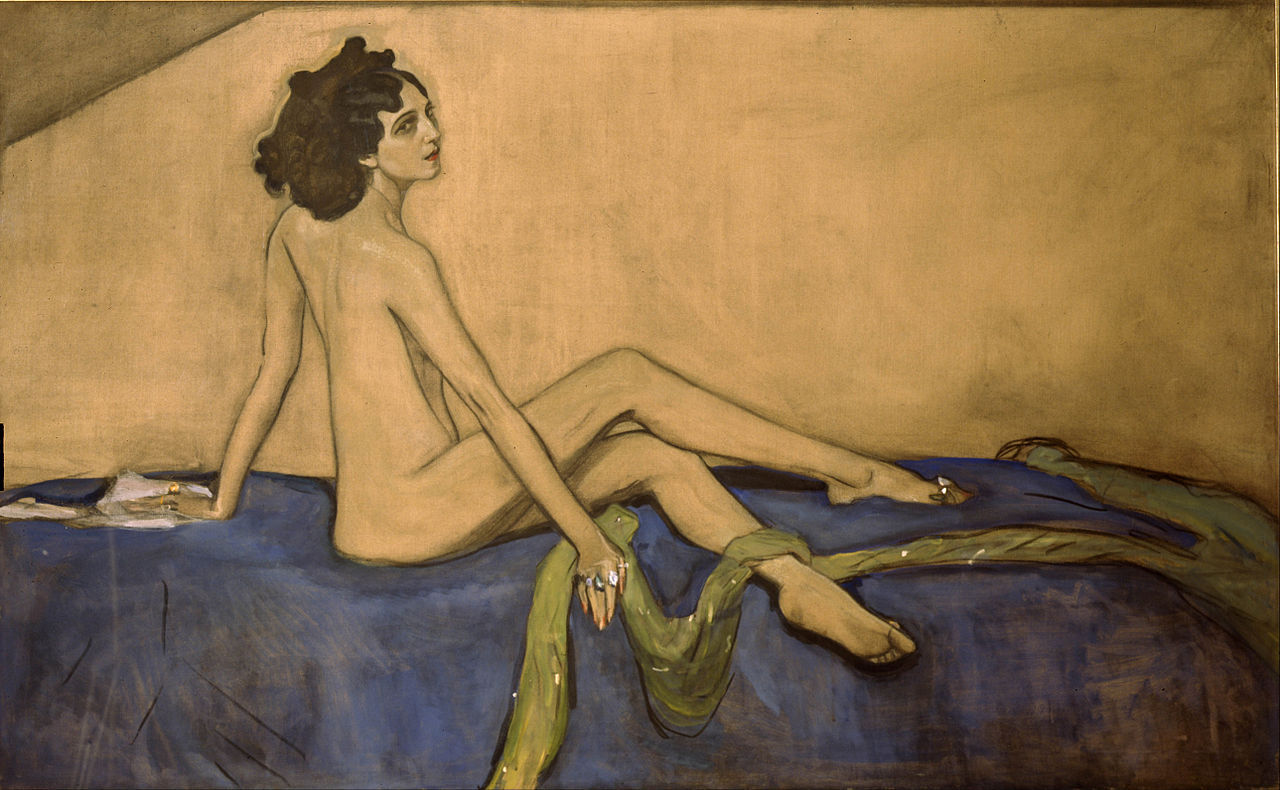
💃
Originally composed as a ballet commissioned by Russian actress and dancer Ida Rubinstein, the piece, which premiered in 1928, is Ravel's most famous musical composition.


Valentin Serov, portrait of Ida as Salomé, 1910.
Before Boléro, Ravel had composed large scale ballets (such as Daphnis et Chloé, composed for the Ballets Russes 1909–1912), suites for the ballet (such as the second orchestral version of Ma mère l'oye, 1912), and one-movement dance pieces (such as La valse, 1906–1920). Apart from such compositions intended for a staged dance performance, Ravel had demonstrated an interest in composing re-styled dances, from his earliest successes – the 1895 Menuet and the 1899 Pavane – to his more mature works like Le tombeau de Couperin, which takes the format of a dance suite.
Maya Plisetskaya 💃 Boléro (1975)
Choreography by Maurice Béjart in 1960
Choreography by Maurice Béjart in 1960
Boléro epitomises Ravel's preoccupation with restyling and reinventing dance movements. It was also one of the last pieces he composed before illness forced him into retirement. The two piano concertos and the song cycle Don Quichotte à Dulcinée were the only completed compositions that followed Boléro.
Maurice Ravel, Bolero for Orchestra
London Symphony Orchestra
Cond. Valery Gergiev
London Symphony Orchestra
Cond. Valery Gergiev
Comments
- Mighty is the mighty toothpick wielded mightily
- Very appropriate to start with the toothpick. But he should have switched to progressively larger implements as the piece went on.
The work had its genesis in a commission from the dancer Ida Rubinstein, who asked Ravel to make an orchestral transcription of six pieces from Isaac Albéniz's set of piano pieces, Iberia. While working on the transcription, Ravel was informed that the movements had already been orchestrated by Spanish conductor Enrique Fernández Arbós, and that copyright law prevented any other arrangement from being made. When Arbós heard of this, he said he would happily waive his rights and allow Ravel to orchestrate the pieces. However, Ravel changed his mind and decided initially to orchestrate one of his own works.
He then changed his mind again and decided to write a completely new piece based on the musical form and Spanish dance called bolero.
While on vacation at St Jean-de-Luz, Ravel went to the piano and played a melody with one finger to his friend Gustave Samazeuilh, saying "Don't you think this theme has an insistent quality? I'm going to try and repeat it a number of times without any development, gradually increasing the orchestra as best I can." This piece was initially called Fandango, but its title was soon changed to "Boléro".
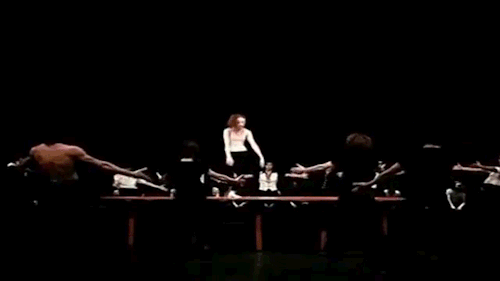

Maurice Béjart
French dance company director Maurice Béjart choreographed a masterpiece dance set to Boléro.
Created in 1960 for the Yugoslav ballerina Duška Sifnios, the dance features a dancer on a tabletop first stepping to the tune's
simplicity, surrounded by seated men, who, in turn, slowly participate in the dance, adding complexity to the building in the orchestration, culminating in a climactic union of the dancers atop the table.
Béjart's dance companies would perform this dance in tours around the world. Amongst the dancers, who performed Béjart's interpretation of "Bolero", included Sylvie Guillem from the Paris Opera Ballet, Grazia Galante, Maya Plisetskaya, and Angele Albrecht.
In a twist, Jorge Donn also played the role of the principal dancer, becoming the first male
to do so. One of Donn's performances can be seen in French filmmaker Claude Lelouch's 1981 musical epic, Les Uns et les Autres.
🕺 Jorge Donn 🕺
Boléro de Ravel
Music
Boléro is written for a large orchestra consisting of:
Boléro is written for a large orchestra consisting of:
- Woodwinds: piccolo, 2 flutes (one doubling on piccolo), 2 oboes (one doubling on oboe d'amore), cor anglais, 2 clarinets (one doubles on E-flat clarinet), bass clarinet, 3 saxophones (one sopranino, one soprano and one tenor), 2 bassoons, contrabassoon
- Brass: 4 horns, 4 trumpets (3 in C, one in D), 3 trombones, bass tuba
-
Timpani 3 and Percussion: 2 snare drums, a bass drum, one piece/pair of orchestral cymbals,
tam-tam
- Celesta and Harp
- Strings
The instrumentation calls for a sopranino saxophone in F, which never existed (modern sopraninos are in E♭). At the first performance, both the sopranino and soprano saxophone parts were played on the B♭ soprano saxophone, a tradition which continues to this day.
Maurice Ravel 🎼 Boléro
Choreographed by Maurice Béjart
With Nicolas Le Riche
Structure

Choreographed by Maurice Béjart
With Nicolas Le Riche
Structure
Boléro is "Ravel's most straightforward composition in any medium". The music is in
C major, 3/4 time, beginning pianissimo and rising in a continuous crescendo to fortissimo possibile (as loud as possible).
It is built over an unchanging ostinato rhythm played on one or more snare drums that remains constant throughout the piece:
It is built over an unchanging ostinato rhythm played on one or more snare drums that remains constant throughout the piece:

On top of this rhythm two melodies are heard, each of 18 bars' duration, and each played twice alternately. The first melody is diatonic, the second melody introduces more jazz-influenced elements, with syncopation and flattened notes (technically it is in the Phrygian mode). The first melody descends through one
octave, the second melody descends through two octaves. The bass line and accompaniment are initially played on pizzicato strings, mainly using rudimentary tonic and dominant notes. Tension is provided by the contrast between the steady percussive rhythm, and the "expressive vocal melody trying to break free". Interest is maintained by constant reorchestration of the theme, leading to a variety of timbres, and by a steady crescendo.
Both themes are repeated a total of eight times. At the climax, the first theme is repeated a ninth time, then the second theme takes over and breaks briefly into a new tune in E major before finally returning to the tonic key of C major.
The melody is passed among different instruments: 1) flute, 2) clarinet, 3) bassoon, 4) E-flat clarinet, 5) oboe d'amore, 6) trumpet, and flute (latter is not heard clearly and in higher octave than the first part), 7) tenor saxophone, 8) soprano saxophone, 9) horn, piccolos and celesta; 10) oboe, English horn and clarinet; 11) trombone, 12) some of the wind instruments, 13) first violins and some wind instruments, 14) first and second violins together with some wind instruments, 15) violins and some of the wind instruments, 16) some instruments in the orchestra, 17) and finally most but not all the instruments in the orchestra (with bass drum, cymbals and tam-tam). While the melody continues to be played in C throughout, from the middle onwards other instruments double it in different keys. The first such doubling involves a horn playing the melody in C, while a celeste doubles it 2 and 3 octaves above and two piccolos play the melody in the keys of G and E, respectively. This functions as a reinforcement of the 1st, 2nd, 3rd, and 4th overtones of each note of the melody. The other significant "key doubling" involves sounding the melody a 5th above or a 4th below, in G major. Other than these "key doublings", Ravel simply harmonizes the melody using diatonic chords.
The accompaniment becomes gradually thicker and louder until the whole orchestra is playing at the very end. Just before the end, there is a sudden change of key to E major, though C major is reestablished after just eight bars. Six bars from the end, the bass drum, cymbals and tam-tam make their first entry, and the trombones play raucous glissandi while the whole orchestra beats out the rhythm that has been played on the snare drum from the very first bar. Finally, the work descends from a dissonant D-flat chord to a C major chord.
The melody is passed among different instruments: 1) flute, 2) clarinet, 3) bassoon, 4) E-flat clarinet, 5) oboe d'amore, 6) trumpet, and flute (latter is not heard clearly and in higher octave than the first part), 7) tenor saxophone, 8) soprano saxophone, 9) horn, piccolos and celesta; 10) oboe, English horn and clarinet; 11) trombone, 12) some of the wind instruments, 13) first violins and some wind instruments, 14) first and second violins together with some wind instruments, 15) violins and some of the wind instruments, 16) some instruments in the orchestra, 17) and finally most but not all the instruments in the orchestra (with bass drum, cymbals and tam-tam). While the melody continues to be played in C throughout, from the middle onwards other instruments double it in different keys. The first such doubling involves a horn playing the melody in C, while a celeste doubles it 2 and 3 octaves above and two piccolos play the melody in the keys of G and E, respectively. This functions as a reinforcement of the 1st, 2nd, 3rd, and 4th overtones of each note of the melody. The other significant "key doubling" involves sounding the melody a 5th above or a 4th below, in G major. Other than these "key doublings", Ravel simply harmonizes the melody using diatonic chords.
The accompaniment becomes gradually thicker and louder until the whole orchestra is playing at the very end. Just before the end, there is a sudden change of key to E major, though C major is reestablished after just eight bars. Six bars from the end, the bass drum, cymbals and tam-tam make their first entry, and the trombones play raucous glissandi while the whole orchestra beats out the rhythm that has been played on the snare drum from the very first bar. Finally, the work descends from a dissonant D-flat chord to a C major chord.
Le Boléro de Ravel
C'est une des œuvres françaises les plus jouées au monde. Maurice Ravel l’a créée en 1928, sur commande. C’est la belle et riche mécène Ida Rubinstein qui lui demande alors un ballet à caractère espagnol. Dans un premier temps, le compositeur veut s’inspirer d’Ibéria d’Isaac Albeniz, mais les droits ne sont pas encore entrés dans le domaine public. À contrecœur, Maurice Ravel se lance dans la composition. Un matin, dans sa maison de Saint-Jean-de-Luz, avant d’aller nager, il imagine une mélodie inspirée du boléro, une danse traditionnelle andalouse. L’œuvre est constituée de deux thèmes répétés neuf fois chacun dans un crescendo orchestral ininterrompu. Dès sa création à l’Opéra de Paris le 22 novembre 1928, le Boléro est un succès. Maurice Ravel est à la fois étonné et heureux. Puis, devant le succès de son œuvre, il cherche à en minimiser l’importance...
Maurice Ravel à propos du Boléro
Je souhaite vivement qu’il n’y ait pas de malentendu au sujet de cette œuvre. Elle représente une expérience dans une direction très spéciale et limitée, et il ne faut pas penser qu’elle cherche à atteindre plus ou autre chose qu’elle n’atteint vraiment. Avant la première exécution, j’avais fait paraître un avertissement disant que j’avais écrit une pièce qui durait dix-sept minutes et consistant entièrement en un tissu orchestral sans musique – en un long crescendo très progressif.
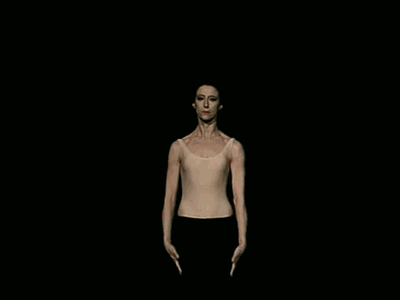
C'est une des œuvres françaises les plus jouées au monde. Maurice Ravel l’a créée en 1928, sur commande. C’est la belle et riche mécène Ida Rubinstein qui lui demande alors un ballet à caractère espagnol. Dans un premier temps, le compositeur veut s’inspirer d’Ibéria d’Isaac Albeniz, mais les droits ne sont pas encore entrés dans le domaine public. À contrecœur, Maurice Ravel se lance dans la composition. Un matin, dans sa maison de Saint-Jean-de-Luz, avant d’aller nager, il imagine une mélodie inspirée du boléro, une danse traditionnelle andalouse. L’œuvre est constituée de deux thèmes répétés neuf fois chacun dans un crescendo orchestral ininterrompu. Dès sa création à l’Opéra de Paris le 22 novembre 1928, le Boléro est un succès. Maurice Ravel est à la fois étonné et heureux. Puis, devant le succès de son œuvre, il cherche à en minimiser l’importance...
Maurice Ravel à propos du Boléro
Je souhaite vivement qu’il n’y ait pas de malentendu au sujet de cette œuvre. Elle représente une expérience dans une direction très spéciale et limitée, et il ne faut pas penser qu’elle cherche à atteindre plus ou autre chose qu’elle n’atteint vraiment. Avant la première exécution, j’avais fait paraître un avertissement disant que j’avais écrit une pièce qui durait dix-sept minutes et consistant entièrement en un tissu orchestral sans musique – en un long crescendo très progressif.
Sylvie Guillem
Boléro

See /Click Below 👀 👂
Angélique Kidjo 🇧🇯 "Lonlon 🎼 Ravel's Bolero"
https://paulcpw.blogspot.com/2017/08/lonlon-ravels-bolero-by-angelique-kidjo.html

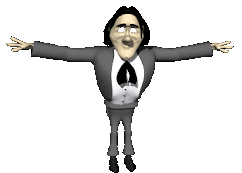
.gif)

https://paulcpw.blogspot.com/2017/08/lonlon-ravels-bolero-by-angelique-kidjo.html
♪ ♫
Angelique Kidjo ♫ Petite Fleur ♪ Ne me Quitte Pas ♪ ♫:
https://paulcpw.blogspot.com/2017/08/angelique-kidjo-petite-fleur-ne-me.html
♪ ♫
Boléro de Ravel - Danse Africaine de Bondy ♪♪ + ♪:
https://paulcpw.blogspot.com/2017/08/bolero-de-ravel-danse-africaine-de-bondy.html
♪ ♫
Glass Harp Orchestra:
https://paulcpw.blogspot.com/2016/06/glass-harp-orchestra.html
Angelique Kidjo ♫ Petite Fleur ♪ Ne me Quitte Pas ♪ ♫:
https://paulcpw.blogspot.com/2017/08/angelique-kidjo-petite-fleur-ne-me.html
♪ ♫
Boléro de Ravel - Danse Africaine de Bondy ♪♪ + ♪:
https://paulcpw.blogspot.com/2017/08/bolero-de-ravel-danse-africaine-de-bondy.html
♪ ♫
Glass Harp Orchestra:
https://paulcpw.blogspot.com/2016/06/glass-harp-orchestra.html
♪ ♫


.gif)


No comments:
Post a Comment